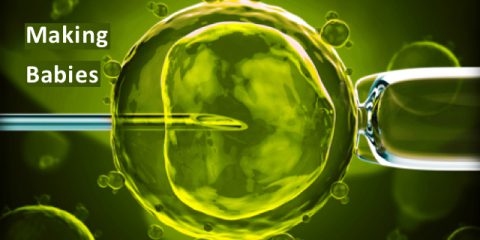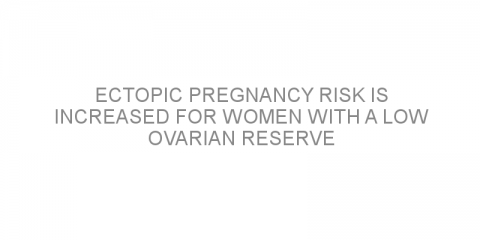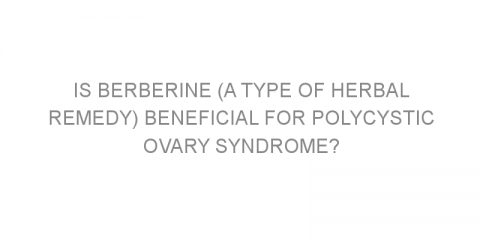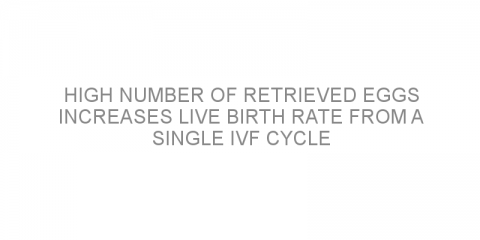Learning about “the birds and the bees” may be the way your parents described getting pregnant but it’s a lot more complicated than you think. And for many couples, trying to have a baby is a result of science and technology that has come a long way in a relatively short amount of time. In 2015, 3,978,497 babies were born in the US and...
Read MoreInfertility Posts on Medivizor
Does chronic pelvic inflammatory disease affect ovarian reserve?
In a nutshell This paper studied the effects of blocked fallopian tubes, a symptom of chronic pelvic inflammation, on ovarian reserve (a measure of the supply of eggs). The authors reported that women with blocked fallopian tubes had lower levels of anti-Mullerian hormone, suggesting a reduced ovarian reserve. Some background Pelvic inflammatory...
Read MoreExamining dietary patterns in patients with PCOS
In a nutshell This paper studied dietary patterns in women with polycystic ovarian syndrome (PCOS). The authors concluded that women who followed a healthy diet were more likely to have an ongoing pregnancy. Some background Polycystic ovary syndrome (PCOS) is a condition whereby cysts form in the ovaries. This can affect ovary function and...
Read MoreEffect of endometrioma on IVF
In a nutshell This paper studied how endometriosis and surgery can affect outcomes in women undergoing in-vitro fertilization (IVF). Based on current evidence, individualized care should be given to patients. Some background Endometriosis is a condition where the inner tissue of the uterus (endometrium), grows in other places. Endometrial...
Read MoreEctopic pregnancy risk is increased for women with a low ovarian reserve
In a nutshell This paper studied the rates of ectopic pregnancy after IVF in women with decreased ovarian reserve. The study concluded that women with a low ovarian reserve were more likely to have an ectopic pregnancy. Some background Ectopic pregnancy refers to when the embryo attaches to somewhere other than the uterus. It occurs in 1 to...
Read MoreUse of hormone therapy before IVF in women with adenomyosis
In a nutshell This paper compared pregnancy rates in women with adenomyosis undergoing in-vivo fertilization. Authors reported higher pregnancy rates among women who underwent frozen-thawed embryo transfer with GnRH than women who underwent fresh embryo transfer with GnRH. Some background Adenomyosis is a disease where the inner layer of the...
Read MoreIs berberine (a type of herbal remedy) beneficial for polycystic ovary syndrome?
In a nutshell This paper studied whether a combination of berberine and letrozole (Femara) improves birth rates compared to either one alone in infertile women with polycystic ovary syndrome (PCOS). Researchers reported no significant benefit in fertility outcomes when berberine and letrozole were combined. Some background Polycystic...
Read MoreCan calcium infusions prevent ovarian hyperstimulation syndrome?
In a nutshell This paper studied whether calcium could reduce the risk of ovarian hyperstimulation syndrome in women undergoing in-vitro fertilisation (IVF). Authors concluded that an infusion of calcium significantly reduced the rate of ovarian hyperstimulation in women at high risk. Some background In-vitro fertilisation (IVF) is a procedure...
Read MoreAnti-mullerian hormone levels can help predict outcome of in-vitro maturation treatment
In a nutshell This paper studied whether anti-mullerian hormone levels can predict outcomes of in-vitro maturation in women with PCOS. Authors concluded that in-vitro maturation could be considered in women with high levels of anti-mullerian hormone. Some background Polycystic ovarian syndrome (PCOS) is a condition where many cysts grow in the...
Read MoreIndividualized vs standard ovarian stimulation for IVF
In a nutshell This paper compared individualized versus conventional ovarian stimulation in women undergoing in-vitro fertilization (IVF). Authors concluded that individualized dosing for ovarian stimulation is as efficient and safer than conventional ovarian stimulation. Some background IVF is a procedure where the sperm fertilizes the egg in a...
Read MoreUsing testicular sperm for men with low sperm count
In a nutshell This paper studied whether using testicular sperm is effective for men with severe oligospermia. Researchers reported a 50% pregnancy rate, all resulting in live births. Some background Oligospermia refers to a low sperm count in the ejaculate. It is a common cause of male infertility. Sperm in the ejaculate is often associated with...
Read MoreHigh number of retrieved eggs increases live birth rate from a single IVF cycle
In a nutshell This paper studied the optimal number of eggs needed to achieve 2 or more live births from a single in-vitro fertilisation (IVF) cycle. Researchers concluded that one fresh cycle with a high number of eggs retrieved is an optimal way to plan IVF treatment. Some background In-vitro fertilisation (IVF) is a procedure where the sperm...
Read More













